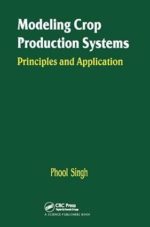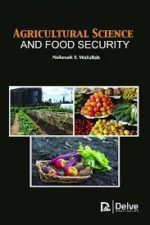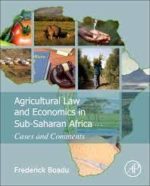The book covers the important aspects of water, air and noise pollution. Using a multidisciplinary approach, it highlights the impact of environmental pollution in the world. It also suggests methods for controlling and scientific monitoring of pollution-causing agents. Also included are chapters on efficient guidelines and standards, radioactive waste, solid waste disposal and sewage treatment, oil pollution and role of insecticides. Pollution in tanneries, fertilizer industry, and pulp and paper industries is also covered. The last few chapters are devoted to environmental management, benefit-cost analysis and mathematical modelling for environmental pollution control.
Environmental Engineering Paperback – 14 July 2017
KSh 7,500.00
The book covers the important aspects of water, air and noise pollution. Using a multidisciplinary approach, it highlights the impact of environmental pollution in the world. It also suggests methods for controlling and scientific monitoring of pollution-causing agents. Also included are chapters on efficient guidelines and standards, radioactive waste, solid waste disposal and sewage treatment, oil pollution and role of insecticides. Pollution in tanneries, fertilizer industry, and pulp and paper industries is also covered. The last few chapters are devoted to environmental management, benefit-cost analysis and mathematical modelling for environmental pollution control.
3 in stock
| SKU: | 9780074633281 |
|---|---|
| Categories: | Agriculture, Engineering |
| Author | G N Pandey |
|---|
Related products
-
Mechanics of Engineering Materials (2nd Edition)
Mechanics of Engineering Materials is well-established as the definitive textbook on the mechanics and strength of materials for students of engineering principles throughout their degree course. Assuming little or no prior knowledge, the theory of the subject is developed from first principles and all topics of stress and strain analysis are covered right up to final year level. Mechanical properties such as tensile behaviour, fatigue, creep, fracture and impact are discussed and more advanced material is also included, particularly on finite element analysis, fracture mechanics and composite materials.
This second edition has been brought fully up-to-date in line with today’s courses. Incorporating new, two-colour illustrations throughout, the book reinforces student comprehension of the theory through numerous new worked examples and end-of-chapter problems involving real engineering situations. An important new feature of this edition is the use and illustration of computer spreadsheets throughout as a powerful problem-solving tool.
Mechanics of Engineering Materials is an indispensible course text for undergraduate students of mechanical engineering, engineering science and civil engineering. It will also be a valuable reference for those studying BTEC and GNVQ courses.
-
Environmental Biotechnology: Principles and Applications, Second Edition
KSh 22,960.00The classic environmental biotechnology textbook―fully updated for the latest advances
This thoroughly revised educational resource presents the biological principles that underlie modern microbiological treatment technologies. Written by two of the field’s foremost researchers, Environmental Biotechnology: Principles and Applications, Second Edition, clearly explains the new technologies that have evolved over the past 20 years, including direct anaerobic treatments, membrane-based processes, and granular processes. The first half of the book focuses on theory and tools; the second half offers practical applications that are clearly illustrated through real-world examples.
Coverage includes:
• Moving toward sustainability
• Basics of microbiology
• Biochemistry, metabolism, genetics, and information flow
• Microbial ecology
• Stoichiometry and energetics
• Microbial kinetics and products
• Biofilm kinetics
• Reactor characteristics and kinetics
• Methanogenesis
• Aerobic suspended-growth processes
• Aerobic biofilm processes
• Nitrogen transformation and recovery
• Phosphorus removal and recovery
• Biological treatment of drinking water -
Modeling Crop Production Systems: Principles and Application 1st Edition by P Singh (Author)
KSh 5,800.00The use of simulation models is a necessity and also an aid in the decision-making process in sustainable agricultural systems. Organizing the experimental knowledge of crop production systems without the book keeping and deductive methods of mathematics is very difficult. This book aims to guide readers in the process by which the properties of the systems can be grasped in the framework of mathematical structure with minimal mathematical prerequisites. The objective of this book is to help the undergraduate, graduate and post-graduate students in the disciplines of agronomy, plant breeding, agricultural meteorology, crop physiology, agricultural economics, entomology, plant pathology, soil science and ecology (environmental science). This book may also be useful for administrators in various agricultural universities in order to direct research, extension and teaching activities. Planners at national and state levels may also benefit from this book
-
Agricultural Science and Food Security
KSh 23,800.00Agricultural Science and Food Security discusses the challenges and hurdles in global food security. The scope of the book includes, but not limited to agricultural science, sustainable agricultural food production, food production and efficiency in utilization of agricultural resources. The main reason is the poor management of pests, weeds ad diseases in crops that is obstructing the way of food security globally ad to address the same, management of same has been discussed in details to maximize production of food crops.
-
Research Methods for Engineers
KSh 6,300.00Learn how to plan for success with this hands-on guide to conducting high-quality engineering research. Plan and implement your next project for maximum impact: step-by-step instructions cover every stage in engineering research, from the identification of an appropriate research topic through to the successful presentation of results. Improve your research outcomes: discover essential tools and methods for producing high-quality, rigorous research, including statistical analysis, survey design, and optimisation techniques. Research with purpose and direction: clear explanations, real-world examples, and over 50 customisable end-of-chapter exercises, all written with the practical and ethical considerations of engineering in mind. A unique engineering perspective: written especially for engineers, and relevant across all engineering disciplines, this is the ideal book for graduate students, undergraduates, and new academics looking to launch their research careers.
-
Understanding Mechanics-oxford university press
KSh 12,800.00One of the clearest and most straightforward texts ever published, Understanding Mechanics covers all the topics required in the single-subject A Level.
It is equally appropriate for those preparing for other Mathematics examinations at A Level and for students on technical courses in further and higher education.
Key Points:
· Principles are introduced in a simple and direct manner and all have worked examples
· Ample opportunity is given for practice with questions and exercises carefully graded to provide a steady progression
· Each chapter closes with a comprehensive selection of recent examination questions
· Answers are given at the back of the book
-
Tropical Roots and Tuber Crops: Cassava, Sweet Potato, Yams and Aroids (Crop Production Science in Horticulture)
KSh 8,260.00Root and tuber crops are important to agriculture, food security and income for 2.2 billion people in developing countries. These species produce large quantities of dietary energy and have stable yields under difficult environmental conditions. This second edition of Tropical Root and Tuber Crops is an authoritative treatment of four important root and tuber crops: cassava, sweet potato, yams, and aroids.
The same format is followed for each crop: Origin and History, Taxonomy and Botany, Breeding and Genetics, Developmental Physiology, Agronomy, Pests and Diseases, Post-Harvest Quality and Marketing. This new edition reviews the scientific literature produced during the last decade and presents major technical advancements. Modern molecular tools have been used to clarify the phylogeny, taxonomy and origin of these species. Similar advances have been made in physiology, agronomy, pathology and product chemistry. It is essential reading for students, researchers and horticulturists.
-
Agricultural Law and Economics in Sub-Saharan Africa: Cases and Comments
KSh 17,400.00Agricultural Law in Sub-Saharan Africa: Cases and Comments introduces the subject of agricultural law and economics to researchers, practitioners, and students in common law countries in Sub-Saharan Africa, and presents information from the legal system in Botswana, Gambia, Ghana, Lesotho, Malawi, Nigeria, Sierra Leone, South Africa, Swaziland, Tanzania, Zambia, and Zimbabwe. The law and economics approach entails the use of quantitative methods in research. This is consistent with the expectations in an applied economics field such as agricultural economics.
Covering the general traditional law topics in contracts, torts, and property, the book goes further to introduce cutting-edge and region-relevant topics, including contracts with illiterate parties, contract farming, climate change, and transboundary water issues. The book is supported by an extensive list of reference materials, as well as study and enrichment exercises, to deepen readers’ understanding of the principles discussed in the book. It is a learning tool, first and foremost, and can be used as a stand-alone resource to teach the subject matter of agricultural law and economics to professionals new to the subject area as well as to students in law school, agricultural economics, economics, and inter-disciplinary classes.
- Offers research findings on such topics as food safety, climate change, transboundary natural resources, international sale of goods, patents, and trademarks to highlight the future sources of pressure on the agriculture industry
- Uses case-studies to provide real-world insights into the challenges and considerations of appropriate agricultural law development
- Challenges readers to carry out their own research in their areas of study, and to gain some understanding of the relationship between law, economics, and statistics
- Includes extensive resources, such as chapter summaries, study questions, and challenge questions at the end of each chapter to assist instructors and students in gaining full benefits from using the book
- Provides separate instructor and student study guides, a test bank, and test bank answers, in hardcopy and electronic formats










Be the first to review “Environmental Engineering Paperback – 14 July 2017”